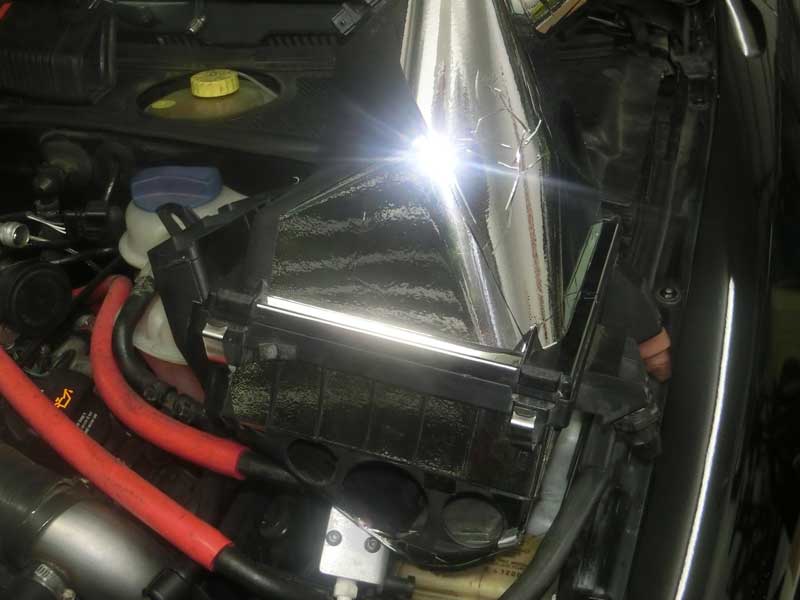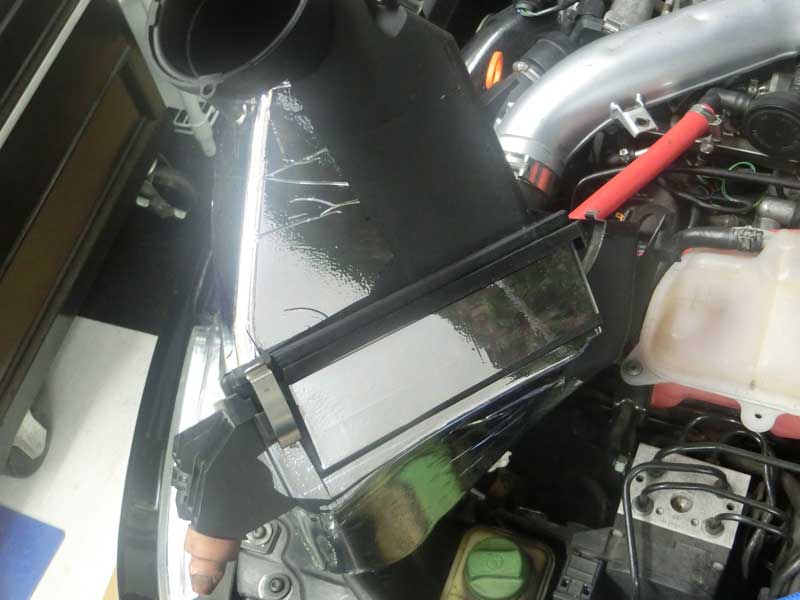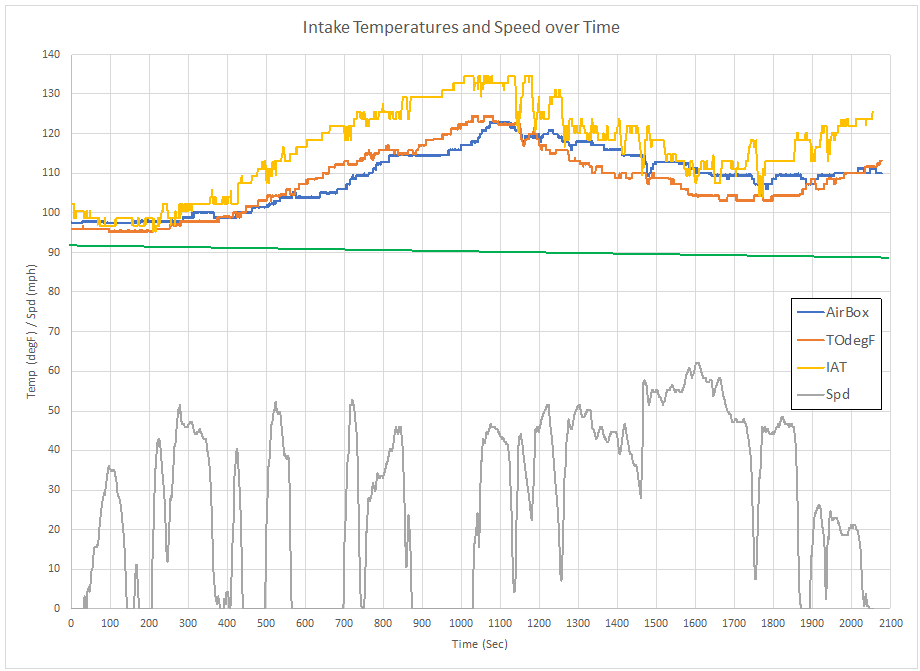With several drives behind me to collect temperature readings at a few different points along the intake I had swapped the temperature sensor to be after the air filter and I began recording temperatures during my morning commute, which allowed steady speeds for the initial part of the drive.
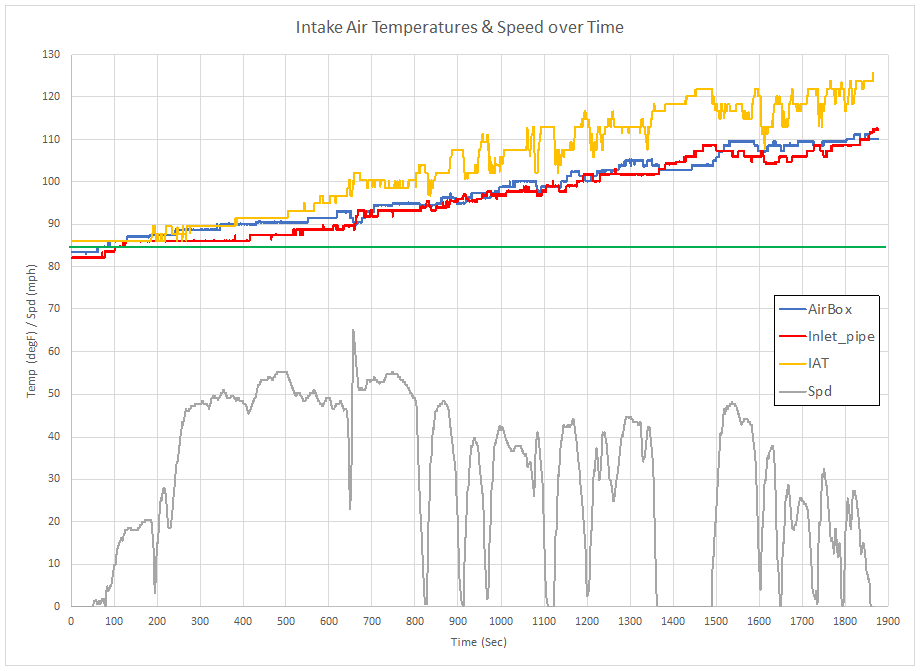
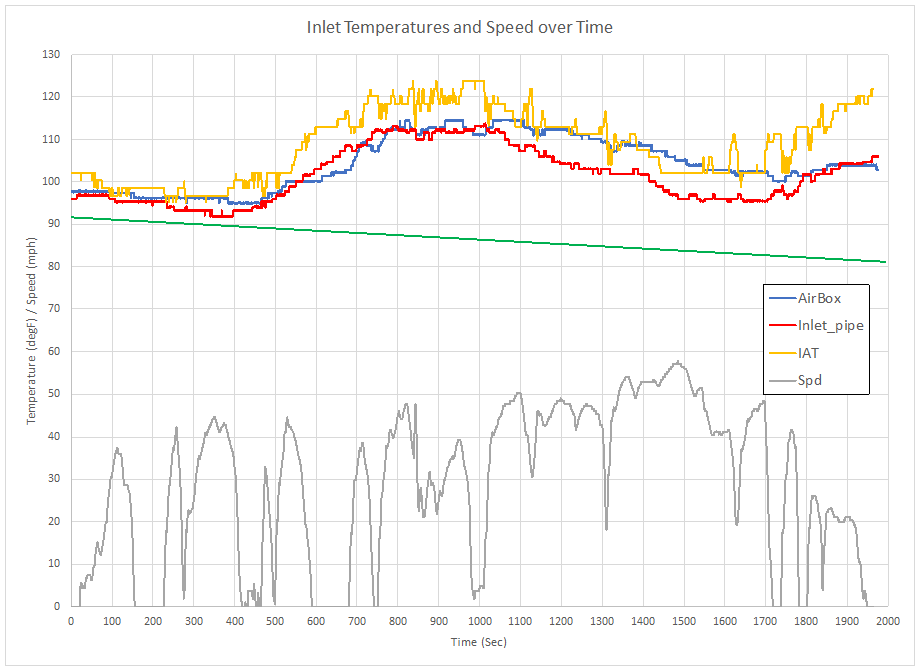
With the additional data I was ready to apply 3M Aerolite reflective film to the exterior of the stock airbox. The 3M Aerolite film is similar to the more commonly referenced DEI Reflect-a-gold foil but silver in color.
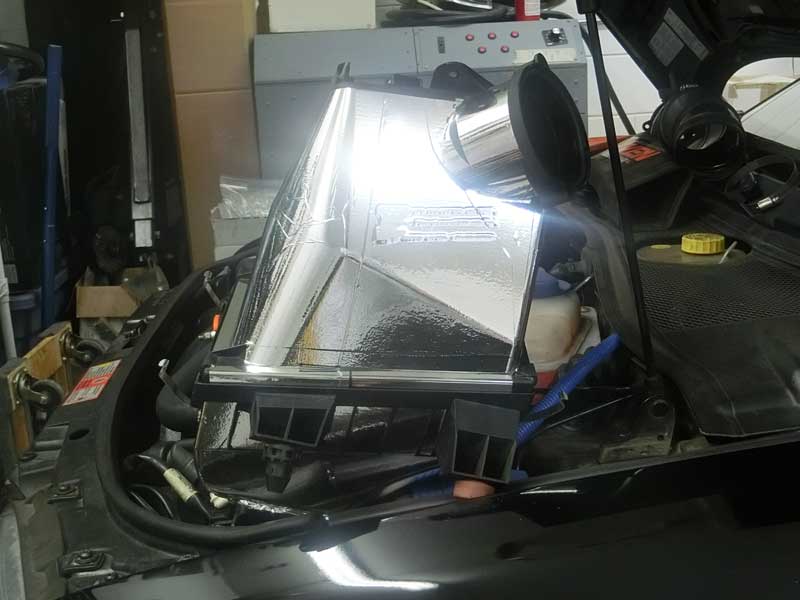
It was now time to take ‘after’ readings to see what changes, if any, were produced by having the reflective film on the airbox.
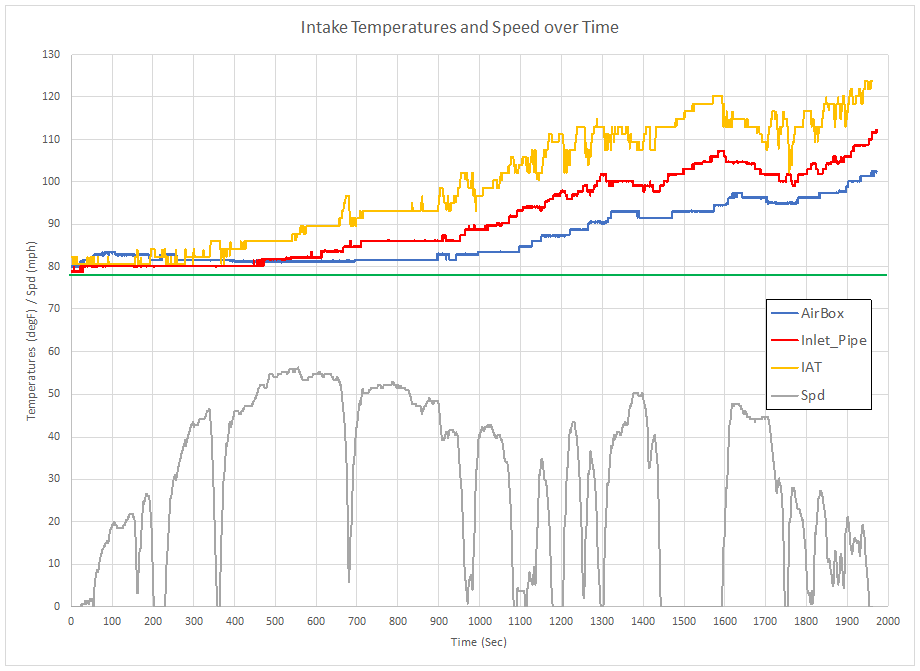
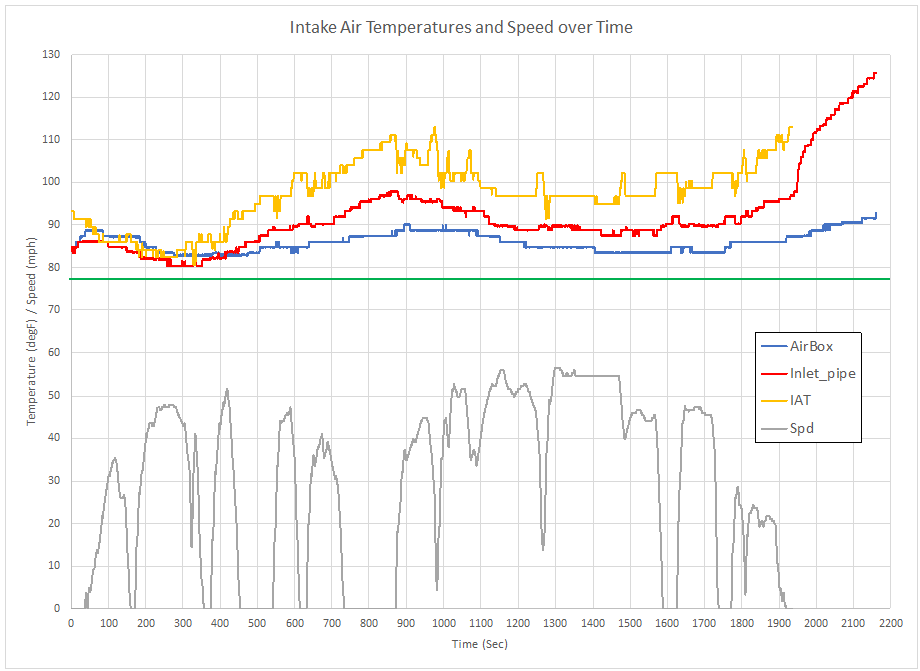
After the 1,900 second mark of the Afternoon Drive I shut the car off which stops the IAT reading, but I continued to record the temperature inside the airbox and the turbo inlet pipe for a couple of more minutes.
To try and make sense of the readings I have calculated what the turbocharger inlet pipe temperature above average ambient is. The reasoning for this value is that the inlet temperature prior to the turbocharger should be less if the reflective foil applied to the airbox is helping to cool the temperature of the air passing through the airbox as compared with an untreated airbox. I chose to use temperature versus ambient temperature since the relative temperature between recording sessions was effected by the ambient temperature. During one logging session the ambient temperature was 77F while on another it was 92F.
Shown below is the temperature delta and speed plotted versus time. The fourth reading, which also has the asterisk after it, is the measurement that was taken with the reflective foil attached to the airbox.
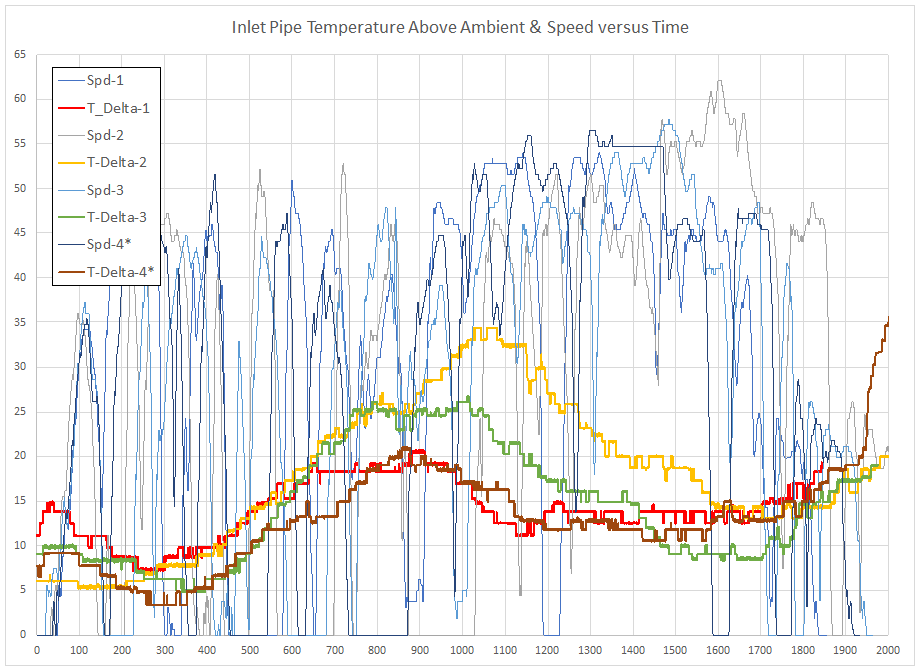
Because the speed lines make viewing the temperature lines more difficult, the chart below shows the same temperature data without showing the vehicle speed data.
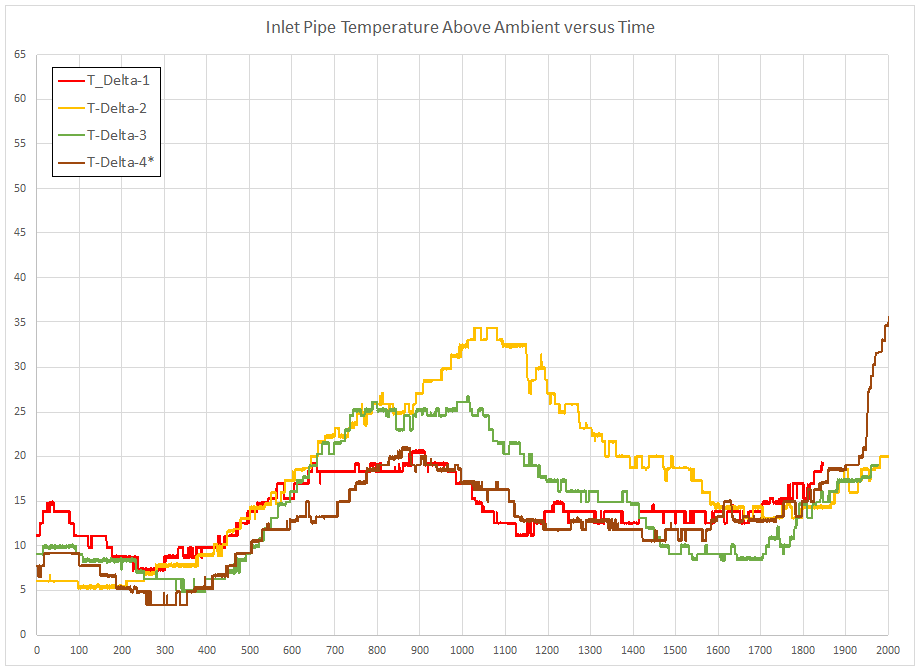
Conclusion:
It is too soon to make a confident statement about the affect of the reflective foil on the intake temperatures, but from what I am seeing above it does not look to have a strong influence.

